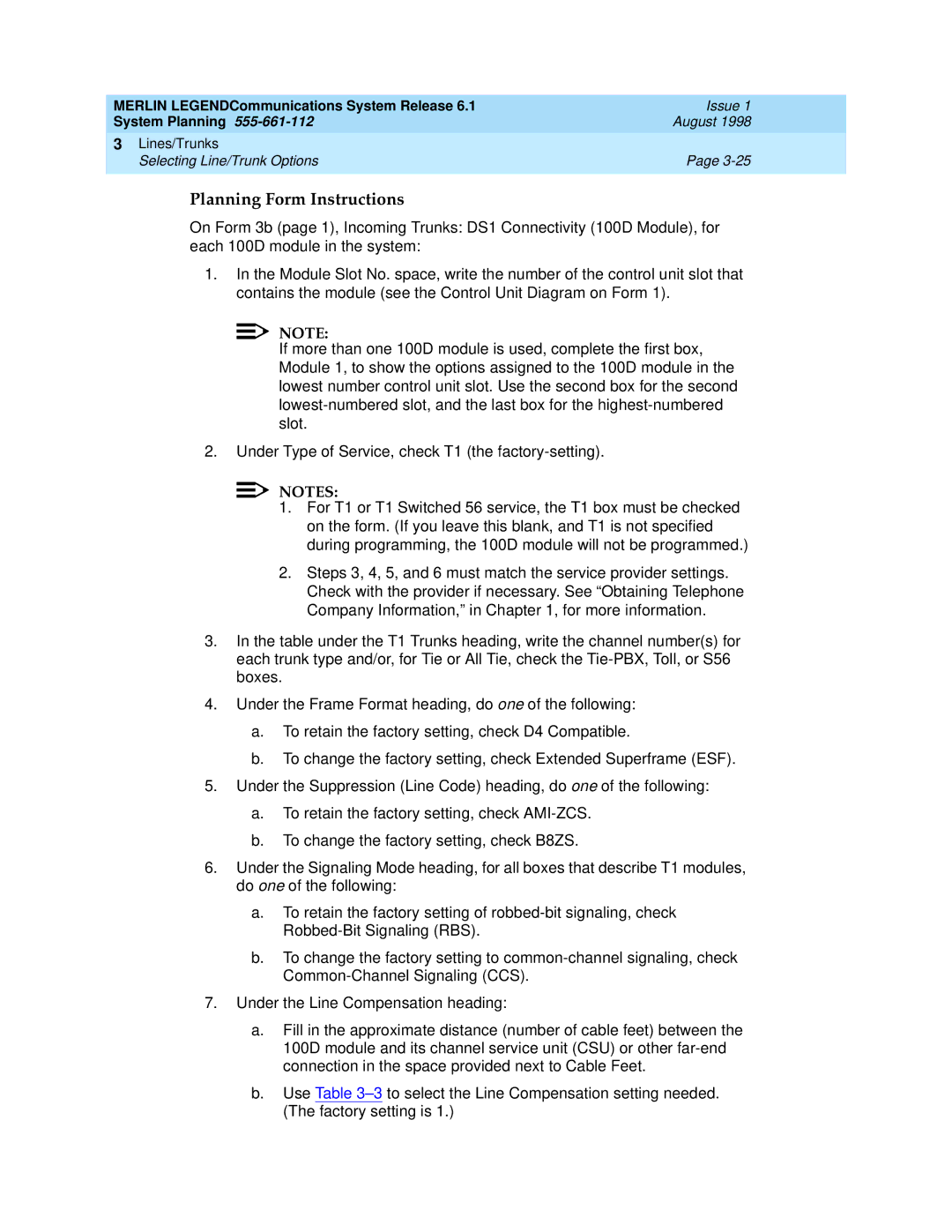MERLIN LEGENDCommunications System Release 6.1 | Issue 1 |
System Planning | August 1998 |
3 Lines/Trunks |
|
Selecting Line/Trunk Options | Page |
|
|
Planning Form Instructions
On Form 3b (page 1), Incoming Trunks: DS1 Connectivity (100D Module), for each 100D module in the system:
1.In the Module Slot No. space, write the number of the control unit slot that contains the module (see the Control Unit Diagram on Form 1).
![]()
![]() NOTE:
NOTE:
If more than one 100D module is used, complete the first box, Module 1, to show the options assigned to the 100D module in the lowest number control unit slot. Use the second box for the second
2.Under Type of Service, check T1 (the
![]()
![]() NOTES:
NOTES:
1.For T1 or T1 Switched 56 service, the T1 box must be checked on the form. (If you leave this blank, and T1 is not specified during programming, the 100D module will not be programmed.)
2.Steps 3, 4, 5, and 6 must match the service provider settings. Check with the provider if necessary. See “Obtaining Telephone Company Information,” in Chapter 1, for more information.
3.In the table under the T1 Trunks heading, write the channel number(s) for each trunk type and/or, for Tie or All Tie, check the
4.Under the Frame Format heading, do one of the following:
a.To retain the factory setting, check D4 Compatible.
b.To change the factory setting, check Extended Superframe (ESF).
5.Under the Suppression (Line Code) heading, do one of the following:
a.To retain the factory setting, check
b.To change the factory setting, check B8ZS.
6.Under the Signaling Mode heading, for all boxes that describe T1 modules, do one of the following:
a.To retain the factory setting of
b.To change the factory setting to
7.Under the Line Compensation heading:
a.Fill in the approximate distance (number of cable feet) between the 100D module and its channel service unit (CSU) or other
b.Use Table
